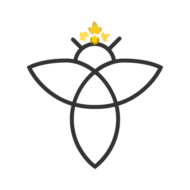Why do I do what I do?
I wish to help. I want to do things better. I like improving systems that don’t work. I want to work with my strengths in creativity, analysis, systematic approach and improve my weaknesses while doing it. I strive for continuous improvement of myself and world around me through what I do.
I learnt to work step by step by integrating available resources to create even better result – a well functional team outperforms one perfectionist designer always. Why do I do what I do? Because I wish to help.
What do I do then?
I do whatever is necessary. I don’t let the job title define how I’ll contribute.
I observe, think about what will bring the most value and then help to get it done. User experience design is cross-disciplinary area and to think one can improve things through design only is shortsighted. Every one has different skillset and strengths and it is when they are combined and utilised well the best result comes through.
Each project leads through different path and each outcome varies. I plug myself into the team that needs my help and work out how to best provide value in the ecosystem that they already have. I go with what they do and support them with my work as best as I can.
How do I do it?
My primary goals are create shared understanding and vision of what we need to build throughout the team, their lead and their stakeholders and keep it alive throughout the whole duration of the project. Transparency through sharing the most actual progress (not when it’s presentable) and syncing regularly to keep the team up to date are two base stones that always bring in the progress in good increments. Being open to people and inviting them in the work assures the project is covered from all bases and everyone can contribute.
I establish multiple check points that keep the progress steady and feedback coming like regular UX reviews, sharing prototypes with the team, presenting latest UX to stakeholders offline and on sprint demos, exposing work in progress through different communication channels.
My role is mainly a facilitator. I am not there to force my design on the team or the users. Rather I spark discussions and collect feedback which I feed them back in the form of various designs that are also user tested to keep us level headed. UX design is not created only by the UX designer but by the whole team which constantly drives the work forward and pitches their own ideas and builds the actual thing.
For this reason my main focus is on the shared vision and information through facilitation of the discussions and meetings, exposing things that are hidden and doing the minimum to get the point across while not wasting time. I don’t believe in pixel perfect presentations and fancy marketing techniques that would sell possible UX value. UX is functional and based in real world value and should come with as many iterations needed to get the most functional system for user to use – not sell on fancy pictures that look nice but ultimately don’t work.
The most common issue that I’ve encountered was people misunderstanding each other while talking about the same thing and needing a little bridge to tie them over.
I don’t follow classical or strict processes. My strategy is to adapt to what’s needed and provide best value for the team, the company while pushing them hard to consider the user at every step.
